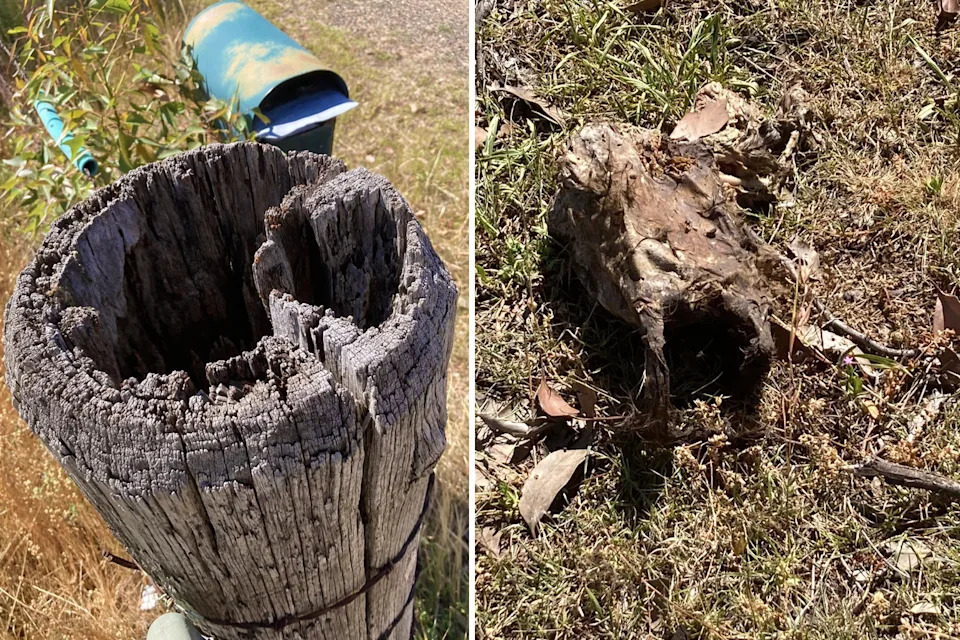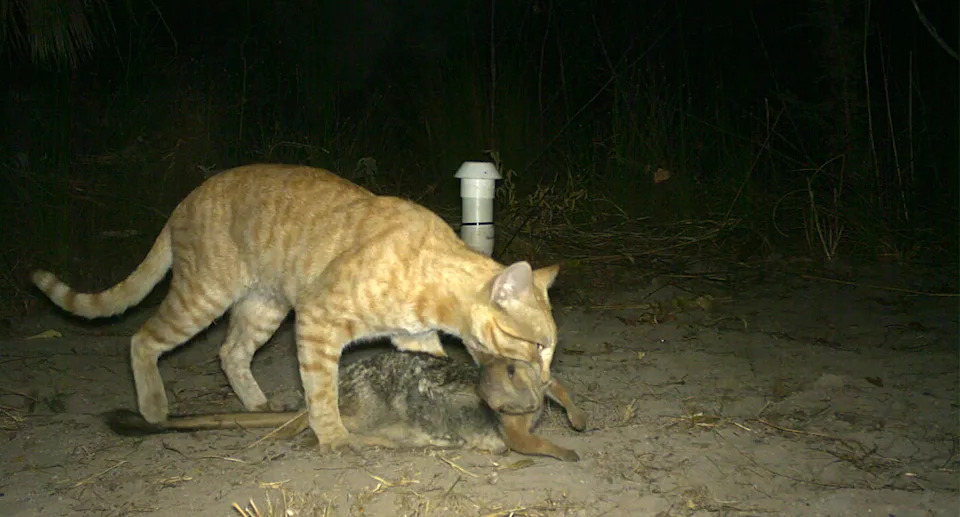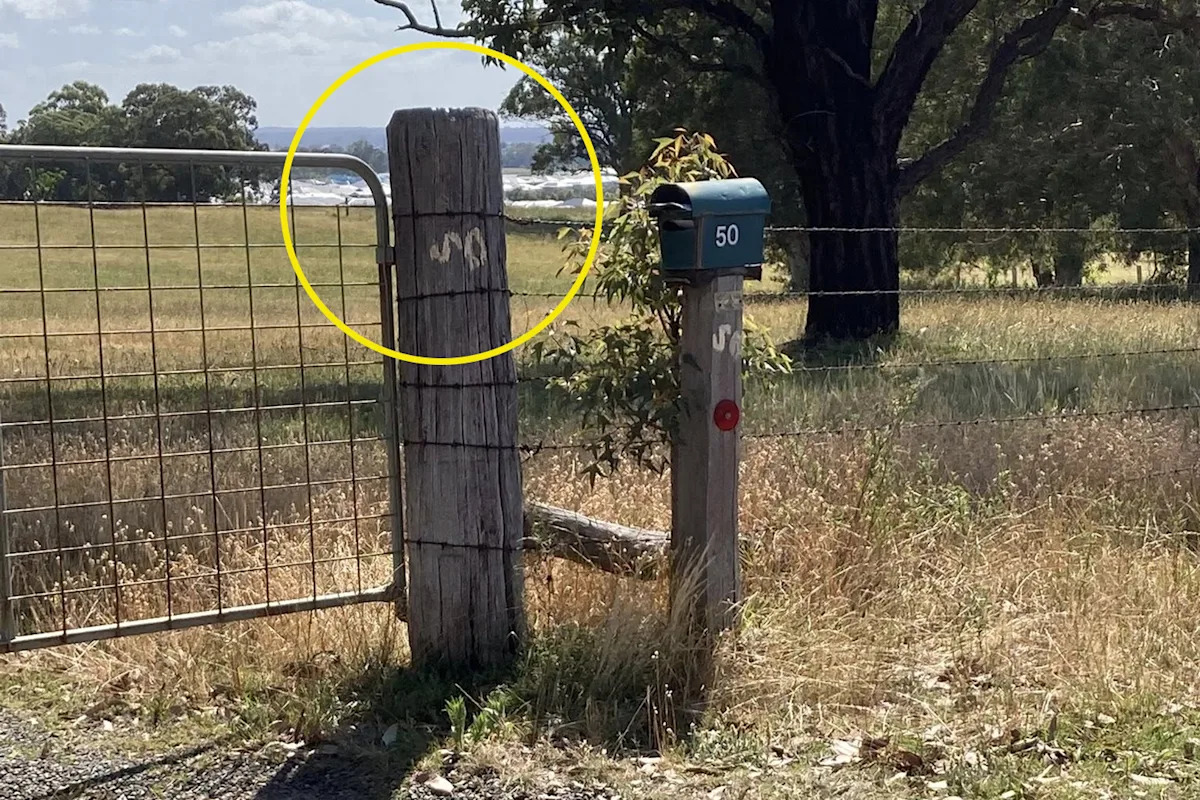The deadly toll cats have taken on Australia’s native wildlife has been laid bare yet again, after an east coast man made a heartbreaking find right in his own backyard.
The New South Wales resident, from the Hunter region, explained how for years he had observed generations of rosellas living in a hollowed log near his home. The birds – brightly coloured, medium-sized parrots – are found widely across eastern, southeastern, and southwestern Australia, as well as in Tasmania.
The log had become a symbol of life and continuity on his property and a haven for the rosellas, who returned year after year to raise their young. For almost 30 years, the man had seen the log used by the rainbow-coloured family. He said it could even be up to “46 years, according to neighbours”.
But, this year, when he went to check the progress of what he assumed to be the next generation, he came across something upsetting — a deceased cat wedged in the log.
“It definitely got stuck after it killed the parent tending the eggs,” the man told Yahoo News. “It happened about two weeks ago.” He said he removed the cat, “which wasn’t pleasant at all, to say the least”, noticing the eggs beneath. “Hopefully, another pair will use it next year,” he added.
What started as a simple post attracted hundreds of responses and prompted passionate Australians from around the country to weigh in. “I think it’s important to post stuff like this to highlight the destruction that cats are responsible for,” one person said.
“I am a cat lover, and that’s why my cats are inside,” said another. “So sad. Feel sorry for the birds having to resort to nesting in a fence post as we continue to destroy their habitat,” a third commented.

A NSW resident was forced to remove a dead cat that had become stuck within this log after attempting to eat the birds. Source: Supplied/Facebook
What makes cats so destructive in Australia?
Across the continent, the impacts of both feral and domestic cats can’t be overstated. Since 1960, it’s believed they’ve cost the economy $18 billion to manage.
Experts estimate cats kill more than 1.5 billion native animals every year in Australia — including mammals, birds, reptiles and frogs. Their hunting instincts, combined with Australia’s unique and often defenceless wildlife, have made them one of the most destructive introduced predators on Earth.

Feral and escaped domestic cats kill billions of animals every year in Australia. Source: NT Department of Environment and Natural Resources
Even well-fed domestic cats contribute to the crisis. Studies have shown that roaming pet cats kill an average of 115 native animals per year, often bringing home only a fraction of their kills. Conservationists say keeping cats indoors or in secure outdoor enclosures is one of the simplest and most effective ways to protect wildlife.
Meanwhile, feral cats, which number in the millions across the country, continue to devastate remote ecosystems, particularly in arid and regional areas. They’ve been directly linked to the extinction of several small native mammal species and remain a major obstacle to wildlife recovery efforts nationwide.
Love Australia’s weird and wonderful environment? 🐊🦘😳 Get our new newsletter showcasing the week’s best stories.

